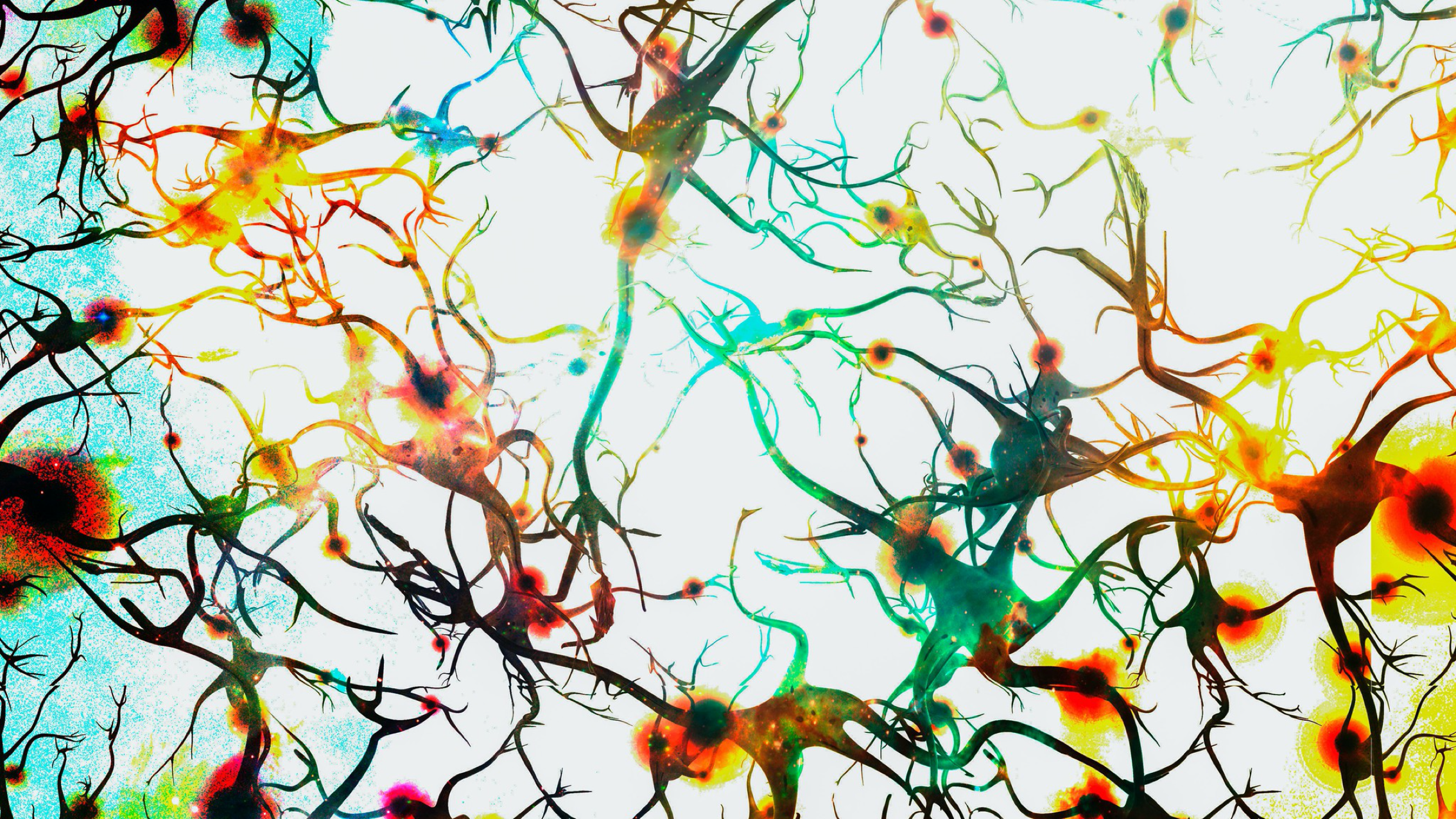New research untangles anxiety’s roots in the brain and points to improved treatment.
Anxiety is not a one size fits all experience. When faced with the same situation or stressor, some people remain calm, while others panic. Now, due to a strange new study on marmosets, researchers are one step closer to understanding why an event might cause some individual’s anxiety to skyrocket while others remain chill.
According to research published Monday in the Journal of Neuroscience, trait anxiety — a general tendency to respond with anxiety to perceived threats in the environment — is tied to serotonin transporters operating in the brain’s emotion-processing center, the amygdala.
If the findings translate to humans, scientists may eventually be able to create faster and more effective anti-anxiety medications by targeting these brain regions.
People vary in their vulnerability to anxiety, and based on this research, there is a “clear neurological basis for this vulnerability,” co-author Shaun Quah, a neuroscience researcher at the University of Cambridge, tells Inverse.
“It is important for people to be more compassionate and understand that not everyone will react to the same stressor the same way; some people are predisposed to be more sensitive to feelings of anxiety.”
Serotonin systems — Previous research suggests serotonin, the so-called “happy chemical,” plays a pivotal role in regulating mood and contributing to mental well-being. The brain’s serotonin levels are partly controlled by proteins on the surface of brain cells – the serotonin transporter. When transporter levels are high, serotonin levels are lower, Quah explains.
Common anti-anxiety and anti-depression drugs called selective serotonin reuptake inhibitors (SSRIs) target these serotonin transporters, and can sometimes successfully relieve symptoms in humans and animals. Because these oral drugs do not work for everyone, researchers — like this team — endeavor to make more effective treatments.
Previously, scientists didn’t exactly know how serotonin systems in particular brain regions influence individual differences in trait anxiety.
To explore this question, researchers examined marmosets — small monkeys whose brains share “large similarities” to the human brain, Quah explains. These monkeys also show similar trait anxiety-like behavior to humans that is sensitive to SSRIs.
The team set up two experiments: In the first, researchers placed each monkey alone in a cage and exposed the animals to an unknown human wearing a mask. The human stood 40 centimeters from the cage and maintained eye contact with the monkey for two minutes.
They observed how the monkeys reacted before, during, and after encountering the human intruder. The researchers tracked how and where animals moved around the cage, shifts indicative of their level of avoidance. The team also documented if the animals bobbed their bodies or made vocalizations — behavioral shifts that indicate their level of anxiety.
The scientists used these behavioral cues to create anxiety scores for each animal. The animals with the highest anxiety scores spent the majority of their time towards the back of the cage, high up, remaining relatively still, and making head and body bobs and calls, the study reports.
Then, the researchers humanely euthanized the animals and analyzed various brain regions including the prefrontal cortex, amygdala, the dorsal anterior cingulate cortex, and raphe nuclei. They examined levels of expression for the serotonin transporter gene in these specific areas as they were involved in the brain’s serotonin and emotion regulation circuit.
This revealed that monkeys with heightened reactivity (those that were the most anxious) had high levels of gene expression for serotonin transporters in their amygdala. This finding suggests serotonin signaling may be driving anxious behavior.
“As non-human primate’s brains share large similarities to the human brain, our findings suggest that decreased serotonin signaling in the amygdala may, in part, underlie people’s heightened reactivity to a perceived threat,” Quah says.
The team conducted a second experiment to see if they could modulate this serotonin signaling. They selected six monkeys who exhibited trait anxiety. Then, they implanted thin metal tubes directly into their brains while they were under anesthesia. The team subsequently directly infused SSRI medication to the anxious monkeys’ amygdalae.
“If you find yourself to be prone to feeling anxious, you should not consider it a personal failing.”
Researchers then repeated the first experiment — exposed the monkeys to an unknown human and tracked their reaction. After the direct infusion, monkeys experienced immediate symptom relief and expressed reduced levels of anxiety-related behaviors.
Directly infusing SSRIs to the amygdalae caused a much faster anti-anxiety effect in the monkeys than typically seen with oral SSRI’s medications. Symptom relief normally takes several weeks to appear if the drug is taken orally.
The research needs to be replicated in humans before it can be said with confidence that this version of SSRI treatment would work for people. Currently, implanting tubes specifically for anti-anxiety drug delivery into the human brain isn’t a viable option, Quah says.
But these findings do suggest that targeting the amygdalae may speed up effective treatment for animals and people with trait anxiety.
“If you find yourself to be prone to feeling anxious, you should not consider it a personal failing,” Quah says. “It is likely due to a natural disposition.”
Quah suggests discussing methods of managing these feelings with a mental health counselor or therapist.
Abstract: High trait anxiety is associated with altered activity across emotion regulation circuitry and a higher risk of developing anxiety disorders and depression. This circuitry is extensively modulated by serotonin. Here, to understand why some people may be more vulnerable to developing affective disorders, we investigated if serotonin-related gene expression across the brain’s emotion regulation circuitry may underlie individual differences in trait anxiety using the common marmoset (Callithrix jacchus, mixed sexes) as a model. First, we assessed the association of region-specific expression of the serotonin transporter (SLC6A4) and serotonin receptor (HTR1A, HTR2A, HTR2C) genes with anxiety-like behavior and second, we investigated their causal role in two key features of the high trait anxious phenotype: high responsivity to anxiety-provoking stimuli, and an exaggerated conditioned threat response. While the expression of the serotonin receptors did not show a significant relationship with anxiety-like behaviour in any of the targeted brain regions, serotonin transporter expression, specifically within the right ventrolateral prefrontal cortex and most strongly in the right amygdala, was associated positively with anxiety-like behaviour. The causal relationship between amygdala serotonin levels and an animal’s sensitivity to threat was confirmed via direct amygdala infusions of a selective serotonin reuptake inhibitor, citalopram. Both anxiety-like behaviours, and conditioned threat-induced responses were reduced by the blockade of serotonin reuptake in the amygdala. Together, these findings provide evidence that high amygdala serotonin transporter expression contributes to the high trait anxious phenotype and suggest that reduction of threat reactivity by SSRIs may be mediated by their actions in the amygdala.




